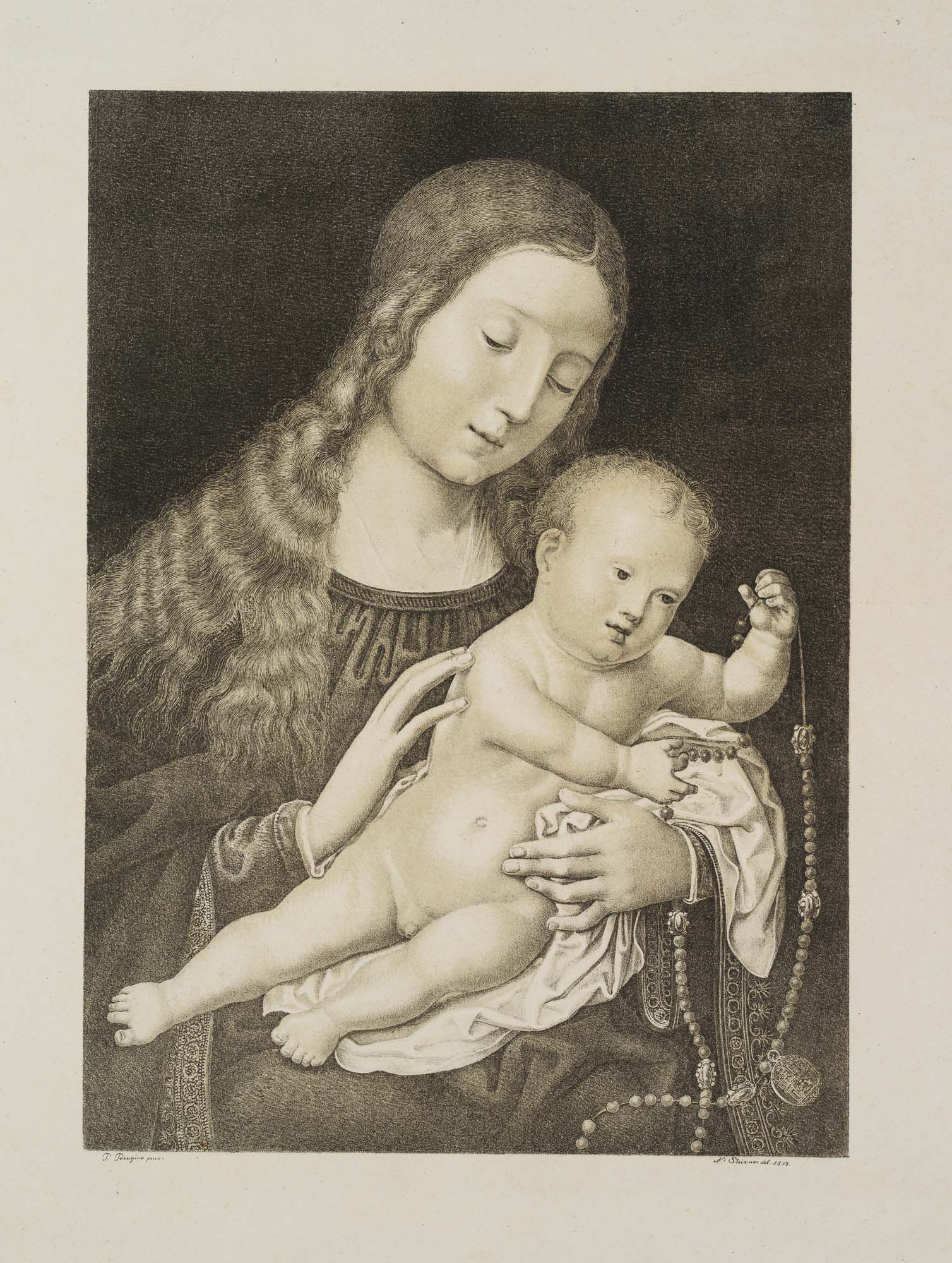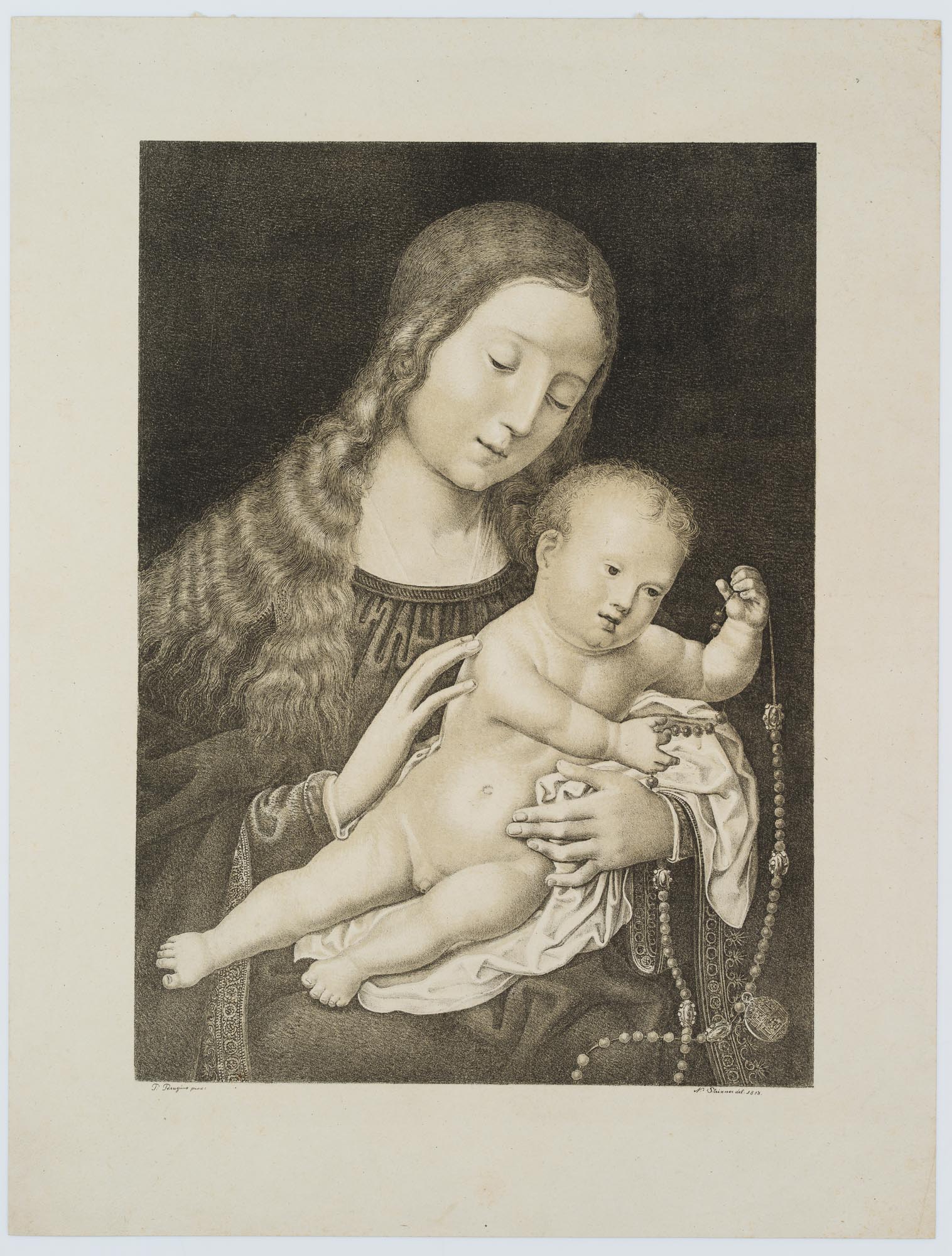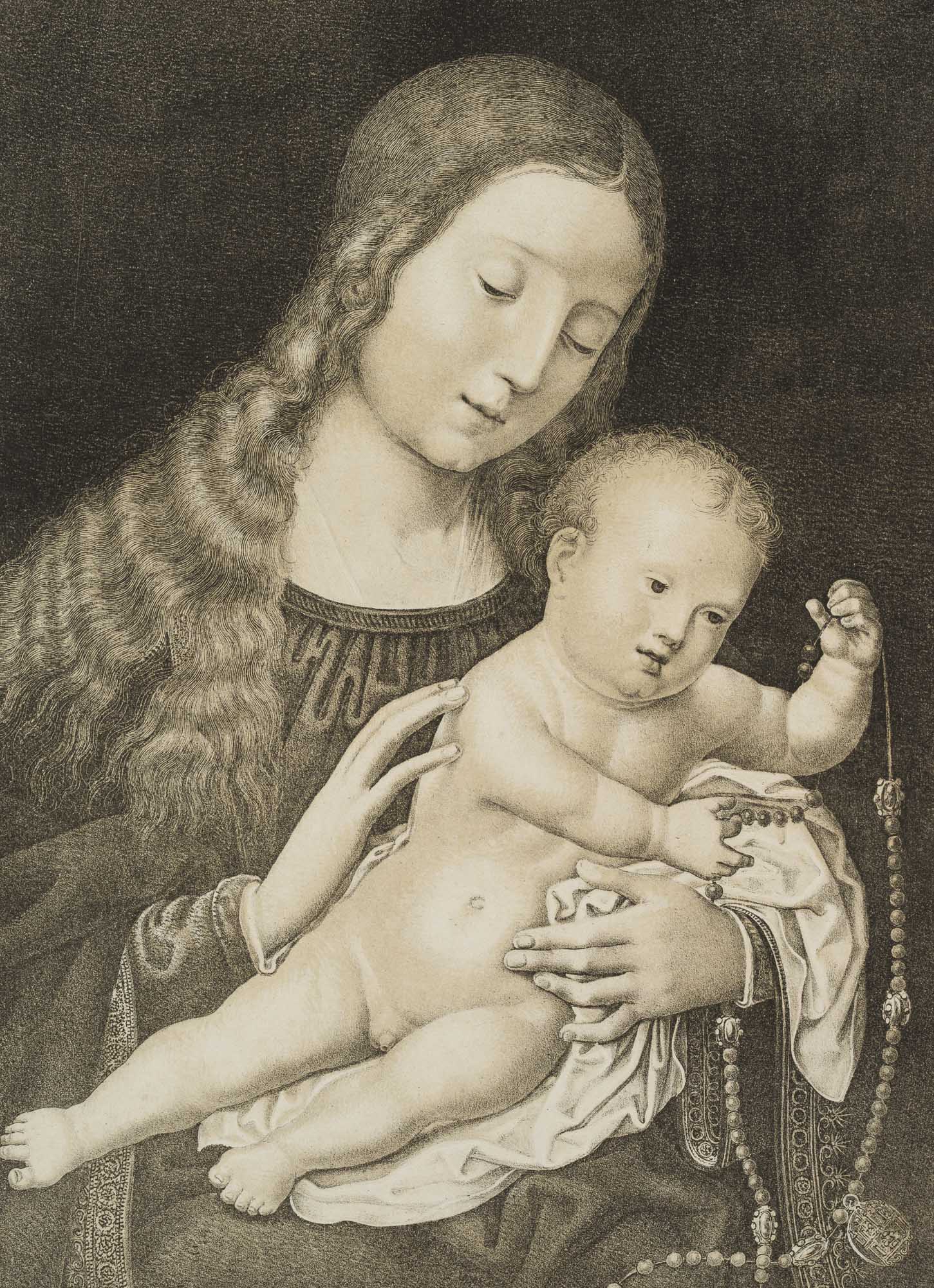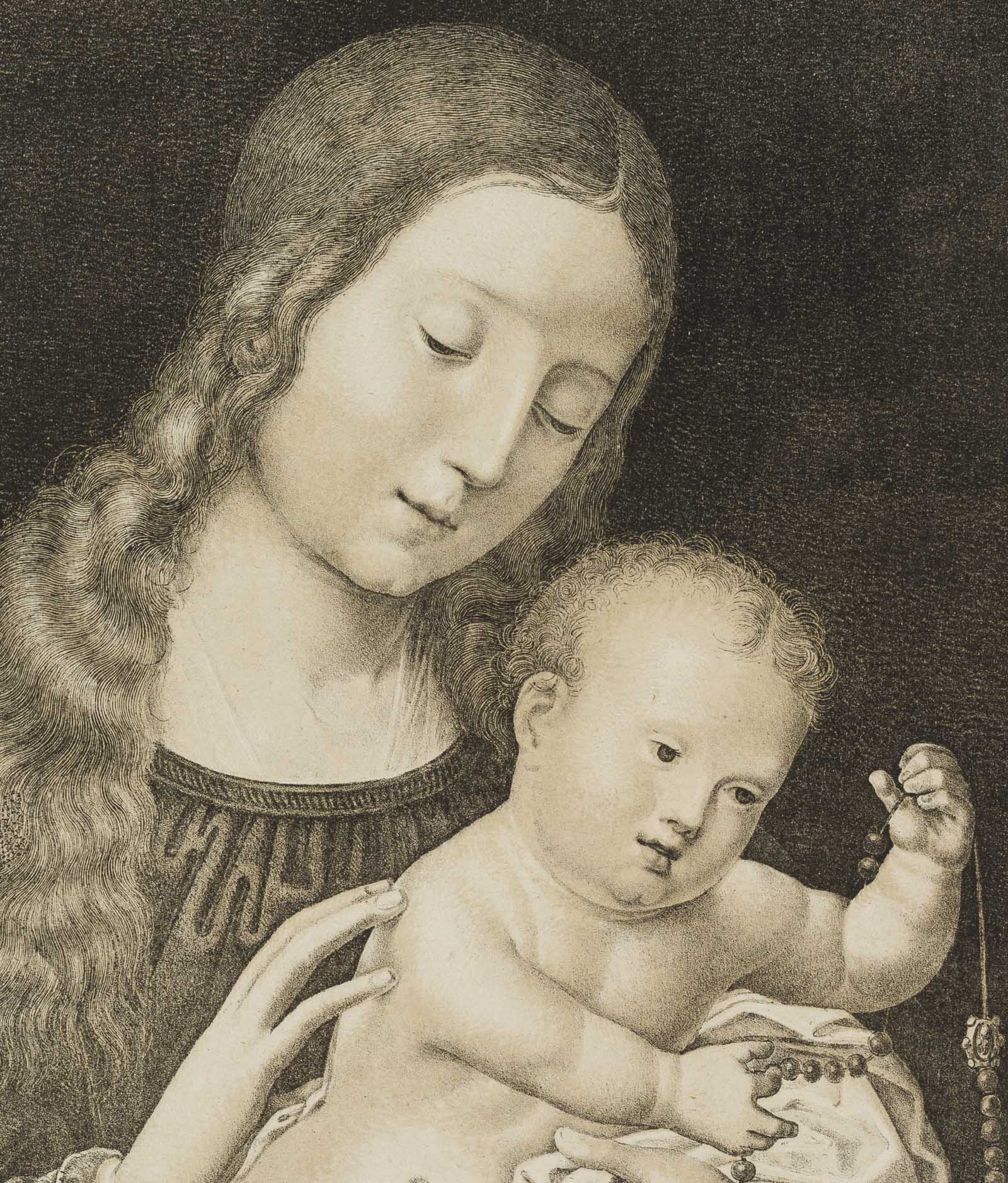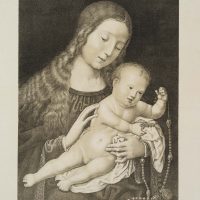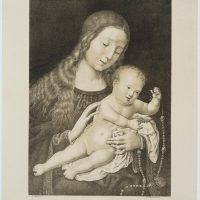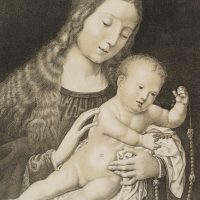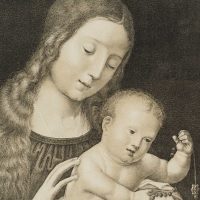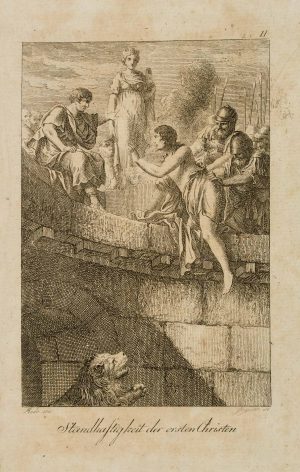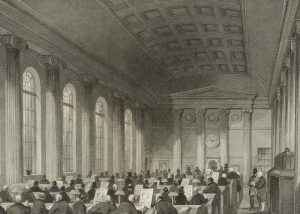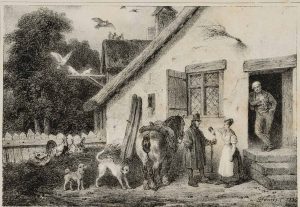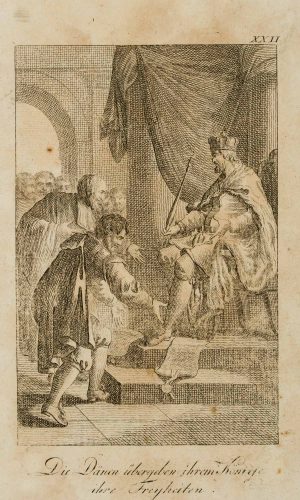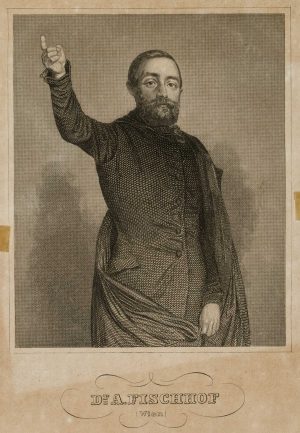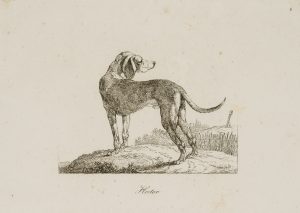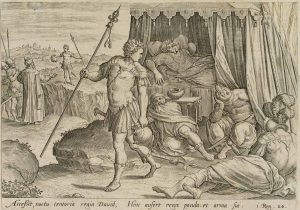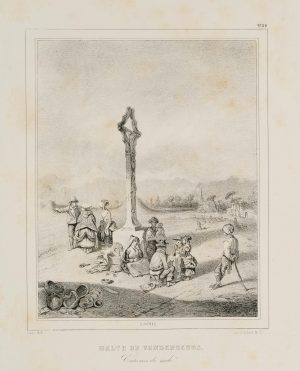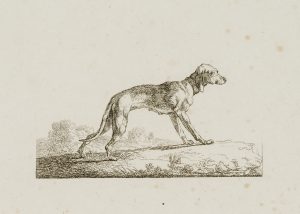Johann Nepomuk Franz Xaver Strixner (1782 Altötting – 1855 München) nach Pietro Perugino (1445 Citt’a della Pieve/Perugia – 1523 Fontignano/Perugia), Madonna mit Kind, Inkunabel der Lithographie, Winkler No. 965, 47.6. II, 1813, um 1813, Lithographie
- Technik: Lithographie auf Papier
- Datierung: um 1813
- Beschreibung: Unter der Darstellung signiert: “P: Perugino pinx. // N. Strixner del: 1813”, verzeichnet bei Winkler: Die Frühzeit der Deutschen Lithographie, No. 965, 47.6. II. / Dussler S. 151, No. XLVII, 6. München 1811-16. Madonna und Kind, das mit dem Rosenkranz spielt. Halbfigur der sitzenden Madonna, Kopf nach rechts geneigt, mit langem offenen Haar hält das Kind mit dem linken Arm, das rechts mit den Kugeln spielt.
- Schlagworte: Religiös, Deutschland, Figürlich, 1800-1849
- Größe: 48,0 cm x 36,5 cm, Darstellung: 37,0 cm x 26,8 cm
- Zustand: Guter Zustand. Die Darstellung macht einen sehr guten Eindruck. Das Blatt ist in den Rändern altersbedingt verfärbt und stellenweise knickspurig; verso an der Oberkante Spuren einer früheren Montage.
English Version:
Johann Nepomuk Franz Xaver Strixner (1782 Altötting – 1855 Munich) after Pietro Perugino (1445 Citt’a della Pieve/Perugia – 1523 Fontignano/Perugia), Madonna and Child, incunabulum of lithography, Winkler No 965, 476 II, 1813, c. 1813, Lithography
- Technique: Lithography on Paper
- Date: c. 1813
- Description: Signed below the depiction: “P: Perugino pinx. // N. Strixner del: 1813”, listed in Winkler: Die Frühzeit der Deutschen Lithographie, No. 965, 47.6. II. / Dussler p. 151, No. XLVII, 6. Munich 1811-16. Madonna and child playing with the rosary. Half-length figure of the seated Madonna, head tilted to the right, with long open hair holding the child with her left arm, who is playing with the balls on the right.
- Keywords: 19th century, Figurative, Religious, Germany,
- Size: 48,0 cm x 36,5 cm (18,9 x 14,4 in), Depiction: 37,0 cm x 26,8 cm (14,6 x 10,6 in)
- Condition: Good condition. The image makes a very good impression. The sheet is discoloured at the margins due to its age and creased in places; at the back side’s upper edge traces of an earlier mounting.

